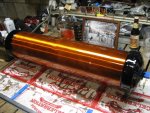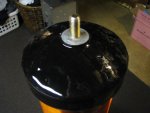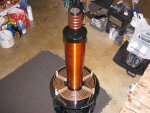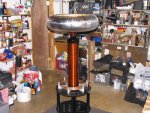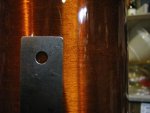Sigurthr
0
- Joined
- Dec 11, 2011
- Messages
- 4,364
- Points
- 83
Oh, and based on this chart, Capacitor uF - nF - pF Conversion Chart, and Deepfriedneon, the transformer I link would need 15nf capacitors.
You missed where I said earlier that when using a static (non-moving) gap you need to multiply the capacitance by 1.618 (phi) for proper operation. You can get away without doing this, but you suffer a small performance hit and risk blowing up your NST and capacitor (even with a terry filter).




